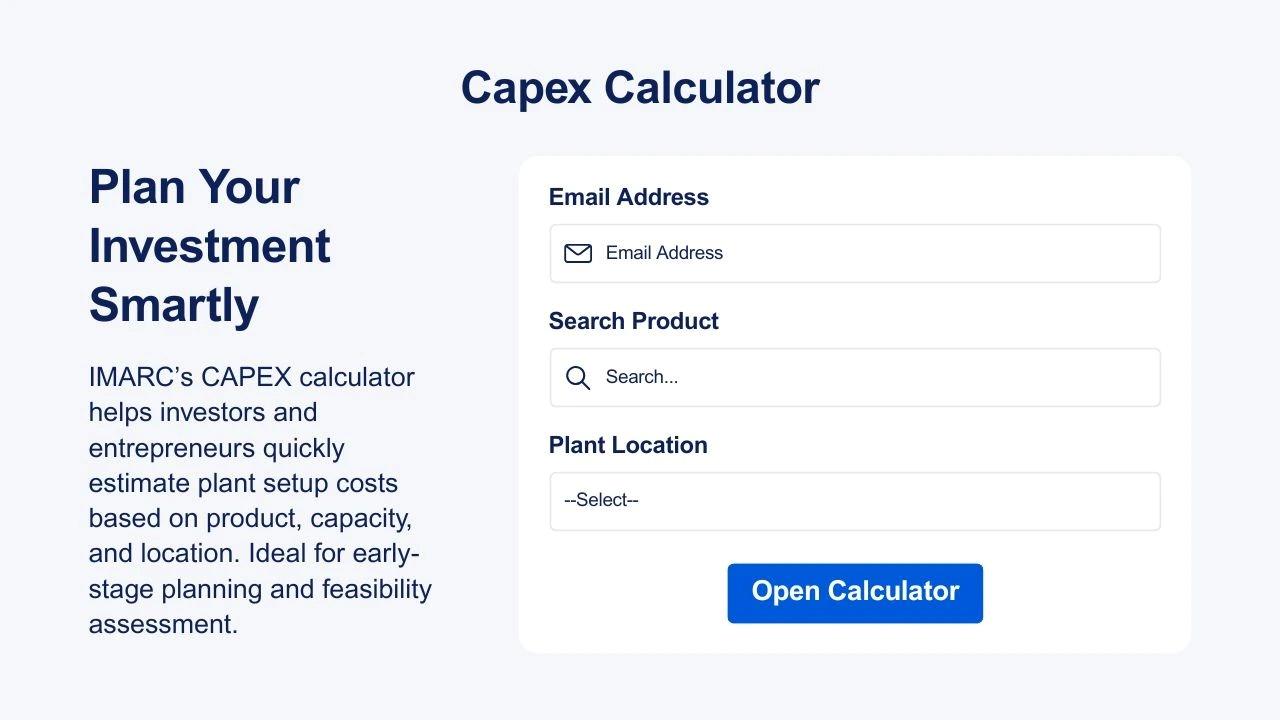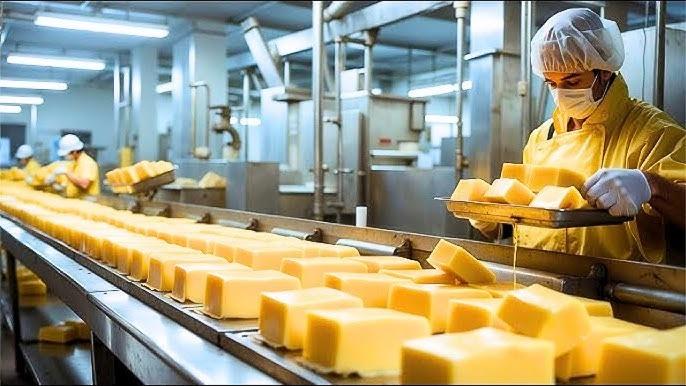Bath Soap Manufacturing Plant Cost Report 2025: Business Plan, Packaging And Raw Material Requirements
Setting up a bath soap manufacturing plant involves selecting a suitable location, acquiring production equipment, sourcing quality raw materials, and ensuring compliance with hygiene and safety standards. Efficient workflow design, skilled labor, quality control systems, and proper packaging facilities are essential to produce competitive, market-ready products.
Request for Sample Report: https://www.imarcgroup.com/bath-soap-manufacturing-plant-project-report/requestsample
IMARC Group's “Bath Soap Manufacturing Plant Project Report 2025: Industry Trends, Plant Setup, Machinery, Raw Materials, Investment Opportunities, Cost and Revenue” offers a detailed and practical guide for entrepreneurs and businesses looking to enter the manufacturing industry. The report includes in-depth analysis of capital investment requirements, project financing options, working capital needs, and projected returns.
This comprehensive business plan outlines every critical step involved in setting up a successful manufacturing plant unit from understanding the industry landscape to planning for real-world challenges. It provides valuable insights into essential components such as bath soap manufacturing plant cost, machinery cost, operating cost, raw material requirements, utility needs, infrastructure setup, and packaging logistics.
Bath Soap Industry Outlook 2025:
The bath soap industry in 2025 is expected to witness steady growth driven by rising personal hygiene awareness, demand for natural and organic formulations, and expanding urban populations. Premiumization trends, eco-friendly packaging, and innovative product variants are anticipated to shape consumer preferences. Emerging markets in Asia-Pacific and Africa are projected to offer significant opportunities due to increasing disposable incomes and evolving lifestyles. However, competition from synthetic cleansers and fluctuating raw material costs may challenge margins, making product differentiation and sustainable practices crucial for long-term success.
Key Insights for Bath Soap Manufacturing Plant Setup:
Detailed Process Flow:
-
Product Overview
Unit Operations Involved
Mass Balance and Raw Material Requirements
Quality Assurance Criteria
Technical Tests
Project Details, Requirements and Costs Involved:
-
Land, Location and Site Development
Plant Layout
Machinery Requirements and Costs
Raw Material Requirements and Costs
Packaging Requirements and Costs
Transportation Requirements and Costs
Utility Requirements and Costs
Human Resource Requirements and Costs
Capital Expenditure (CapEx) and Operational Expenditure (OpEx) Analysis:

Project Economics:
-
Capital Investments
Operating Costs
Expenditure Projections
Revenue Projections
Taxation and Depreciation
Profit Projections
Financial Analysis
Profitability Analysis:
-
Total Income
Total Expenditure
Gross Profit
Gross Margin
Net Profit
Net Margin
Key Cost Components of Setting Up a Bath Soap Plant:
-
Land and Building – Cost of purchasing or leasing industrial land, construction of production facility, storage, and administrative areas.
Machinery and Equipment – Investment in saponification units, mixing tanks, molds, cutting machines, drying systems, and packaging lines.
Raw Materials – Procurement of oils/fats, alkali, fragrances, colorants, essential oils, and other additives.
Labor Costs – Wages for skilled technicians, production workers, supervisors, and administrative staff.
Utilities – Electricity, water supply, steam, and waste management expenses.
Licensing and Compliance – Regulatory approvals, quality certifications, and environmental clearances.
Packaging Materials – Wrapping films, cartons, labels, and branding costs.
Marketing and Distribution – Promotional campaigns, logistics, and supply chain setup.
Economic Trends Influencing Bath Soap Plant Setup Costs 2025:
-
Raw Material Price Volatility – Fluctuations in vegetable oils, animal fats, and fragrance ingredients due to global supply chain disruptions and climate-related impacts.
Energy Cost Variations – Rising electricity, fuel, and water costs driven by inflation and shifting energy policies.
Labor Market Conditions – Wage growth in manufacturing hubs influenced by skill shortages and labor law reforms.
Inflationary Pressures – General price increases affecting construction, equipment, and operational expenses.
Currency Exchange Rates – Impact on imported machinery and raw materials in markets with unstable currencies.
Sustainability Regulations – Additional costs for eco-friendly production, biodegradable packaging, and waste management compliance.
Technological Advancements – Upfront investment in automation and advanced production systems to improve efficiency and reduce long-term costs.
Challenges and Considerations for Investors in Bath Soap Plant Projects:
-
Regulatory Compliance – Adhering to hygiene, safety, environmental, and labeling standards in domestic and export markets.
Market Competition – Competing with established brands, private labels, and low-cost producers.
Raw Material Dependency – Risk of price and supply fluctuations in oils, fats, and specialty additives.
Consumer Trends – Rapid shifts toward natural, organic, and chemical-free products requiring formulation adjustments.
Capital Requirements – High initial investment in equipment, infrastructure, and working capital.
Distribution Network – Building efficient logistics and retail partnerships to ensure market reach.
Brand Differentiation – Creating unique value propositions through quality, packaging, and marketing strategies.
Request for Customization: https://www.imarcgroup.com/request?type=report&id=8597&flag=E
Conclusion:
The bath soap manufacturing sector in 2025 presents a promising opportunity for investors, supported by growing hygiene awareness, expanding consumer markets, and rising demand for premium and sustainable products. However, success in this industry depends on strategic planning, efficient cost management, adherence to regulatory standards, and the ability to adapt to evolving market trends. By integrating advanced production technologies, securing reliable supply chains, and building strong brand recognition, investors can position their bath soap ventures for long-term growth and profitability in a competitive global marketplace.
About Us:
IMARC Group is a global management consulting firm that helps the world's most ambitious changemakers to create a lasting impact. The company excel in understanding its client's business priorities and delivering tailored solutions that drive meaningful outcomes. We provide a comprehensive suite of market entry and expansion services. Our offerings include thorough market assessment, feasibility studies, company incorporation assistance, factory setup support, regulatory approvals and licensing navigation, branding, marketing and sales strategies, competitive landscape, and benchmarking analyses, pricing and cost research, and procurement research.
Contact Us:
IMARC Group
134 N 4th St. Brooklyn, NY 11249, USA
Email: sales[@]imarcgroup.com
Tel No:(D) +91 120 433 0800
United States: (+1-201971-6302)
Legal Disclaimer:
MENAFN provides the
information “as is” without warranty of any kind. We do not accept
any responsibility or liability for the accuracy, content, images,
videos, licenses, completeness, legality, or reliability of the information
contained in this article. If you have any complaints or copyright
issues related to this article, kindly contact the provider above.
Most popular stories
Market Research

- UK Cosmetics And Personal Care Market To Reach USD 23.2 Billion By 2033
- Global Mobile Wallet Market Size Projected To Reach USD 701.0 Billion By 2033 CAGR Of 15.09%.
- $MBG Token Supply Reduced By 4.86M In First Buyback And Burn By Multibank Group
- From Zero To Crypto Hero In 25 Minutes: Changelly Introduces A Free Gamified Crash Course
- Japan Halal Food Market Size To Surpass USD 323.6 Billion By 2033 With A CAGR Of 8.1%
- Pluscapital Advisor Empowers Traders To Master Global Markets Around The Clock




















Comments
No comment